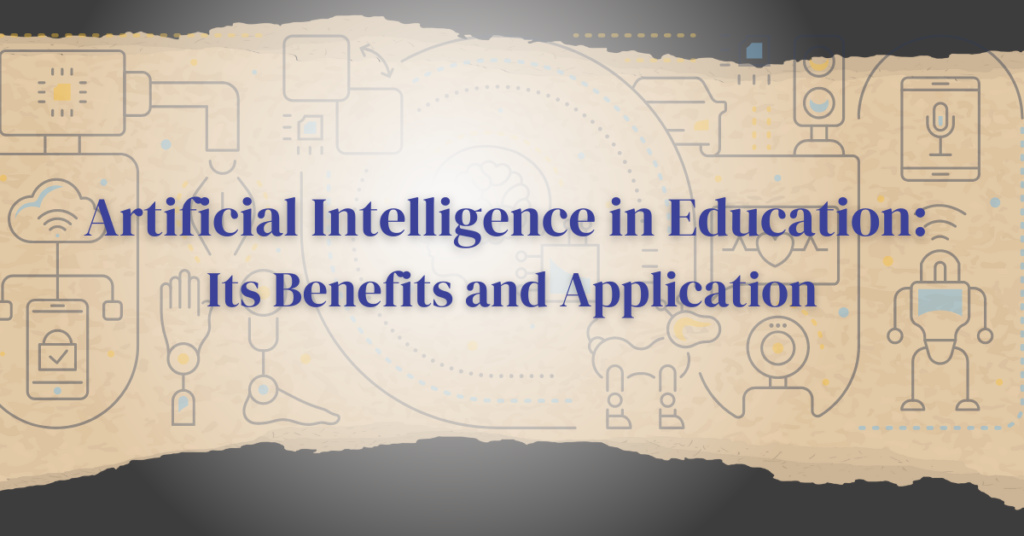
Introduction
The utilization of Artificial Intelligence (AI) in different fields becomes more prevalent each day. The same can be said in learning. Artificial Intelligence in education has been a thing for many years. It started in the 80s and 90s with automated feedback and progressed to all the sophisticated technologies we have today.
This blog will explore the benefits we get from incorporating artificial Intelligence into our learning. Are they worth it? Let us find out.
Personalized Learning
One of the main advantages of technologies driven by artificial intelligence systems over humans is that they can contain massive amounts of data, process it efficiently, and come up with an accurate answer or analysis. The application of AI in education advances adaptive learning through personalization and consideration of learning styles.
It is no secret that all learners differ in their approach to education. Artificial Intelligence can create a learning environment that accommodates students’ needs and offers personalized learning opportunities based on each student’s individual preferences. Aside from improved academic performance, personalized learning gives learners greater ownership of their education. This is because they can decide for themselves what they want to learn and how they want to study it with the assistance provided by AI. Moreover, this will help struggling students because they have different learning needs.
Instructional design improvement
Forming the best curriculum with the best instructional materials is always a challenge course designers experience. There are many approaches to go with this, and there are also numerous considerations a designer has to take note of to ensure that the outcome is exceptional. Artificial Intelligence can assist in achieving this goal.
For example, AI can examine student performance data, spot patterns and trends, and assist course designers in identifying areas where students may struggle, allowing them to adjust their instruction accordingly. Moreover, automated systems (discussed later) can be incorporated into the course to improve the learning experience.
Professional improvement
Aside from learners and the modules, instructors benefit from the introduction of artificial Intelligence in education. One example is using learning management systems with AI-powered capabilities, which can analyze student data and give instructors insights into areas where their students may be having difficulty. Instruction can be improved, and student outcomes can be raised using this information.
AI-powered tutoring systems
Among the most popular application of Artificial Intelligence in education are so-called intelligent tutoring systems (ITS). ITS offers personalized step-by-step tutorials for each student on topics in clearly defined, well-structured courses like arithmetic or physics.
The system develops an ideal step-by-step flow through the learning materials and activities by drawing on the subject matter and pedagogy experts’ knowledge and in reaction to each student’s misconceptions and accomplishments. To help the student understand the subject matter successfully, the system automatically adjusts the degree of difficulty. It offers tips or support as the student moves forward.
Automated Student Assessment
Instructors sometimes overload with paper works, causing delays in providing feedback to the learners they handle. Automating the feedback can help resolve this issue. Learners can receive automated feedback in real time using AI, allowing them to make changes to their work while still participating in the learning process. It also increases the efficiency of providing feedback. Moreover, one of its main perks is scalability—assessment can be applied to many learners simultaneously.
AI-powered automated assessment can be a potent tool for assisting students in strengthening their comprehension of particular concepts or abilities. It can free up teachers’ time and give students more immediate, individualized feedback, improving their understanding and ability to learn the material.
References
Chen, L., Chen, P., & Lin, Z. (2020). Artificial Intelligence in education: A Review. IEEE Access, 8, 75264–75278. https://doi.org/10.1109/access.2020.2988510
Göksel, Nil & Bozkurt, Aras. (2019). Artificial Intelligence in Education:
Current Insights and Future Perspectives.
Holmes, W., Bialik, M., & Fadel, C. (2019). Artificial Intelligence In Education Promises and Implications for Teaching and Learning. The Center for Curriculum Redesign. Retrieved from https://curriculumredesign.org/wp-content/uploads/AIED-Book-Excerpt-CCR.pdf.
Knox, J. (2020). Artificial Intelligence and education in China. Learning, Media and Technology, 45(3), 298–311. https://doi.org/10.1080/17439884.2020.1754236
Roll, I., & Wylie, R. (2016). Evolution and revolution in artificial Intelligence in education. International Journal of Artificial Intelligence in Education, 26(2), 582–599. https://doi.org/10.1007/s40593-016-0110-3

